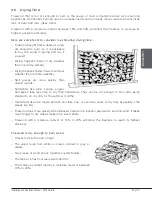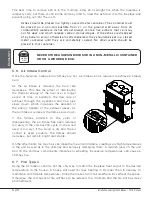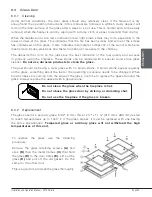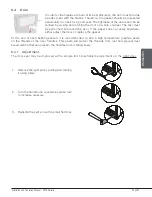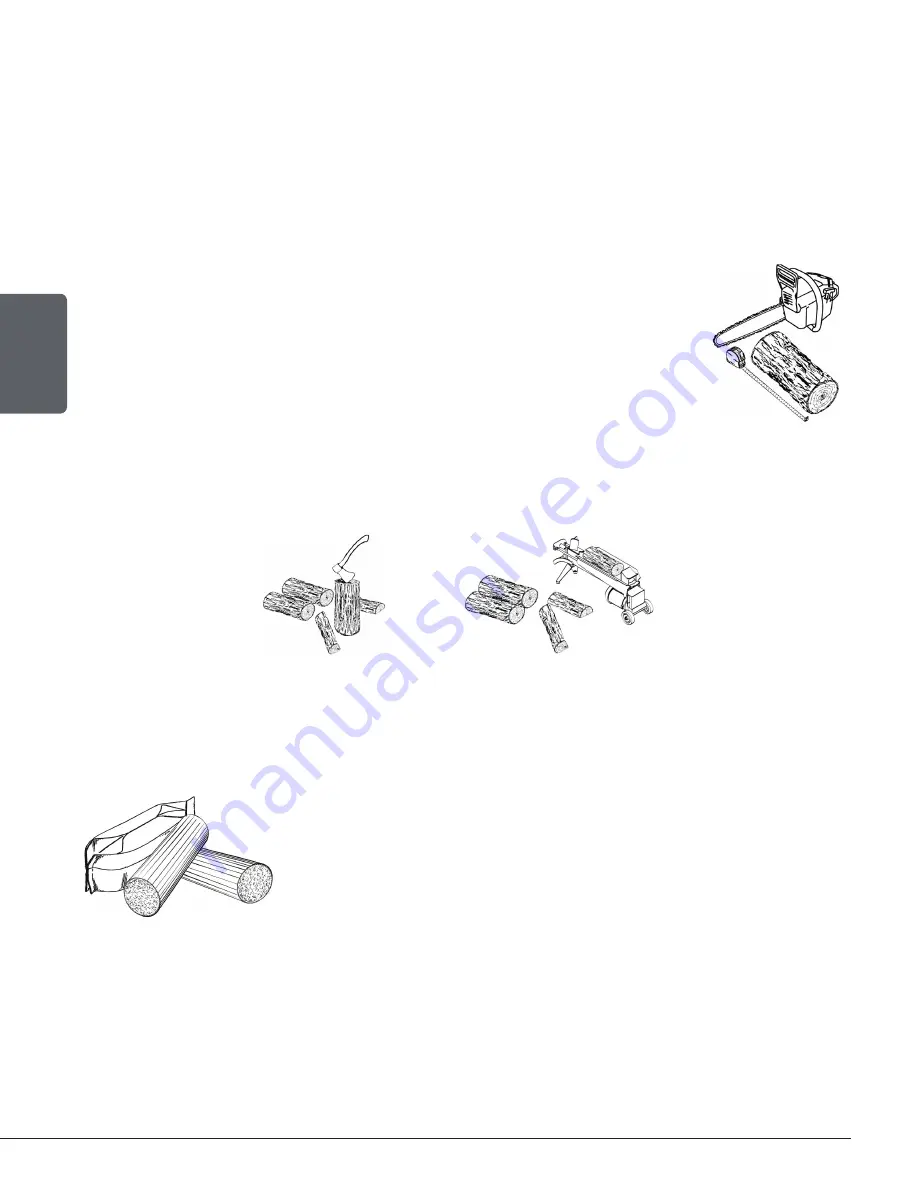
Page 16
Installation and Operation Manual - FP18 Dallaire
ENGLISH
Using softwoods avoids overheating the house, which can be a common problem with wood
heating in moderate weather. Harder woods are best for colder winter weather when more heat
and longer burn cycles are desirable.
Hardwood trees like oak, maple, ash and beech are slower growing and longer lived than softer
woods like poplar and birch. That makes hardwood trees more valuable. The advice that only
hardwoods are good to burn is outdated. Old, leaky cast iron fireplaces wouldn’t hold a fire
overnight unless they were fed large pieces of hardwood.
3.2 Log Length
Logs should be cut at least 1" (25 mm) shorter than the firebox so they fit in
easily. Pieces that are even slightly too long makes loading the fireplace very
difficult. The most common standard length of firewood is 16" (400 mm).
3.3 Piece Size
Firewood dries more quickly when it is split. Large unsplit rounds can take years to dry enough
to burn. Even when dried, unsplit logs are difficult to ignite because they don’t have the sharp
edges where the flames first catch.
Wood should be split to a range of sizes, from about 3" to 6" (75 mm to 150 mm) in cross
section. Having a range of sizes makes starting and rekindling fires much easier.
3.4 Compressed Wood Logs
Compressed wood logs made of 100% compressed sawdust can be
burned with caution in the number of these logs burned at once. Do
not burn compressed logs made of wax impregnated sawdust or logs
with any chemical additives.
Do not poke or stir the logs while
they are burning.
Use only logs that meet the requirements of ULC/ORD C127 M1990 for composite logs.
Refer to package cautions and warnings before using logs.
Содержание DALLAIRE FP18
Страница 2: ......
Страница 6: ...Page 6 Installation and Operation Manual FP18 Dallaire ENGLISH CERTIFICATION PLATE...
Страница 69: ......
















